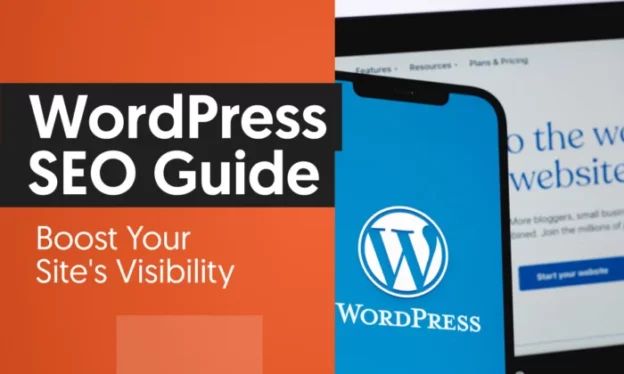WordPress is the most widely used CMS, powering millions of websites across the globe. While WordPress is naturally SEO-friendly, competition online is fierce.
To reach global audiences and rank high on search engines, you need a comprehensive WordPress SEO strategy that covers technical setup, content optimisation, mobile readiness, and international SEO.
This guide explores step-by-step methods, best plugins, tools, and practical techniques to make your WordPress site rank better worldwide.
Contents
Why SEO is Crucial for WordPress Websites
-
Global Competition: With millions of websites, standing out requires more than just good content.
-
Sustainable Traffic: Organic search is more cost-effective than paid ads.
-
User Experience: SEO improvements (speed, mobile design, navigation) also enhance usability.
-
International Visibility: With global optimisation, your site can rank in multiple countries and languages.
WordPress SEO Foundation
1. Choose the Right Hosting
Fast, secure hosting improves performance and rankings. Look for:
-
99.9% uptime guarantee.
-
Global data centres or CDN integration.
-
Built-in caching and SSL.
Recommended providers for SEO: SiteGround, Kinsta, WP Engine (global reach and speed).
2. Configure Basic SEO Settings
-
Go to Settings → Permalinks → choose Post Name for clean URLs.
-
Ensure your site is indexable (Settings → Reading → “Discourage search engines” should be unchecked).
-
Set your preferred domain (with or without www).
3. Install an SEO Plugin
Top options:
-
Yoast SEO: Best for beginners.
-
Rank Math: Advanced features like schema and multiple keyword tracking.
-
All in One SEO (AIOSEO): Simple and WooCommerce-friendly.
On-Page SEO Optimisation
Titles & Meta Descriptions
-
Use your primary keyword in titles.
-
Keep titles under 60 characters, meta descriptions under 160.
-
Write click-friendly, human-first titles.
Headings (H1, H2, H3)
-
One H1 per page (your main topic).
-
Use H2/H3 for subtopics with related keywords.
Image SEO
-
Compress images with plugins like Smush or Imagify.
-
Use descriptive file names (
wordpress-seo-guide.jpg). -
Add keyword-rich alt text for accessibility and rankings.
Internal Linking
-
Link to older articles to boost their authority.
-
Use descriptive anchor text (avoid “click here”).
Content Depth
-
Long-form content (1,500+ words) ranks better globally.
-
Use LSI keywords and related terms naturally.
-
Add FAQs for rich snippet opportunities.
Technical SEO for WordPress
-
Mobile-Friendly Design
-
Use responsive WordPress themes.
-
Test with Google’s Mobile-Friendly Test.
-
-
Page Speed Optimisation
-
Install WP Rocket or W3 Total Cache.
-
Use a CDN (Cloudflare, BunnyCDN) for global delivery.
-
Minify CSS, JS, and HTML files.
-
-
Schema Markup
-
Add structured data for articles, products, reviews.
-
Use Rank Math or Schema Pro plugin.
-
-
Canonical Tags
-
Avoid duplicate content by setting canonical URLs.
-
-
Secure Site (HTTPS)
-
Install SSL (Let’s Encrypt is free).
-
Google prioritises HTTPS websites.
-
Global & International SEO
-
Multilingual SEO: Use WPML or Polylang to create multilingual websites.
-
Hreflang Tags: Tell Google which language version to show in each region.
-
Country Targeting: Use Google Search Console’s International Targeting tool.
-
Local SEO for Multiple Markets:
-
Optimise for “WordPress hosting UK” vs “WordPress hosting Canada.”
-
Create region-specific landing pages.
-
SEO for WooCommerce (WordPress E-Commerce)
-
Optimise product pages with unique titles and meta descriptions.
-
Use schema for product rich snippets (price, reviews, availability).
-
Ensure fast checkout with caching and speed plugins.
-
Create category pages optimised for keywords.
Best WordPress SEO Plugins & Tools
| Plugin/Tool | Features | Best For | Free / Paid |
|---|---|---|---|
| Yoast SEO | On-page SEO, XML sitemaps, readability analysis | Beginners | Free + Premium |
| Rank Math | Advanced schema, keyword tracking, WooCommerce SEO | Agencies & businesses | Free + Pro |
| AIOSEO | Easy setup, WooCommerce support, local SEO | SMBs | Free + Paid |
| WP Rocket | Caching, lazy loading, minification | Speed optimisation | Paid |
| MonsterInsights | Google Analytics integration, SEO tracking | Performance tracking | Free + Pro |
| Ahrefs / SEMrush | Keyword research, backlinks, competitor analysis | Global SEO campaigns | Paid |
WordPress SEO Checklist
-
Use SEO-friendly hosting.
-
Configure permalinks and XML sitemaps.
-
Install and set up an SEO plugin.
-
Optimise titles, meta descriptions, and headings.
-
Compress and optimise all images.
-
Use HTTPS and enable caching/CDN.
-
Add schema markup for rich results.
-
Build backlinks and internal linking.
-
Implement multilingual SEO if targeting global markets.
-
Track progress with Google Analytics & Search Console.
FAQ
Q: Can I rank a WordPress website globally with free plugins only?
A: Yes, plugins like Yoast or Rank Math provide strong SEO foundations, but advanced global SEO usually needs premium tools.
Q: What is the best SEO plugin for WordPress?
A: Rank Math is popular for its advanced features, while Yoast remains beginner-friendly.
Q: How important is site speed for SEO?
A: Very important—Google’s Core Web Vitals directly impact rankings. Faster sites also improve user engagement.
Q: How do I do multilingual SEO on WordPress?
A: Use WPML or Polylang to create translated pages, then configure hreflang tags for search engines.
Q: Does content length matter for WordPress SEO?
A: Yes, long-form content (1,500–3,000 words) tends to rank higher, especially if it provides in-depth value.
